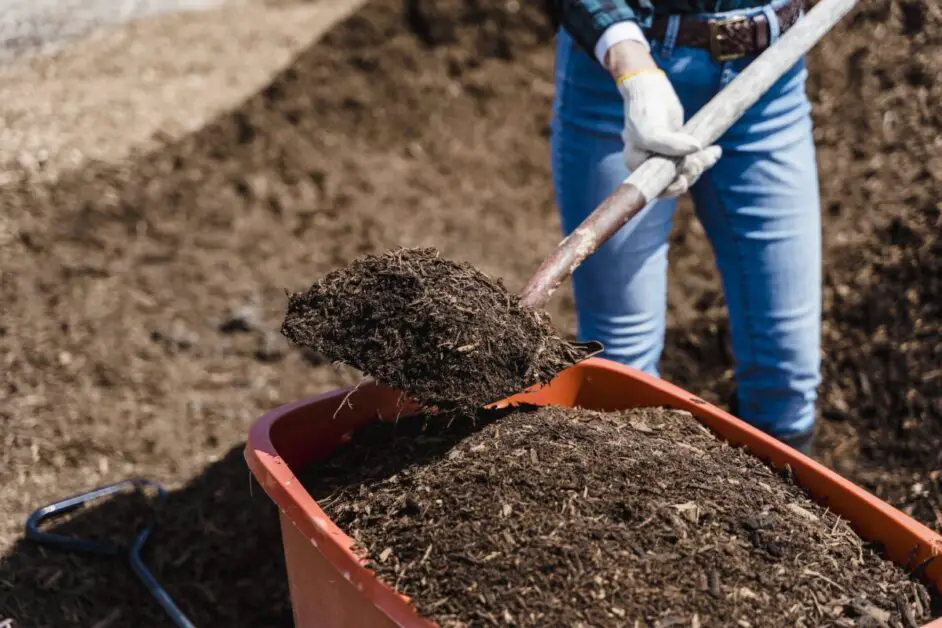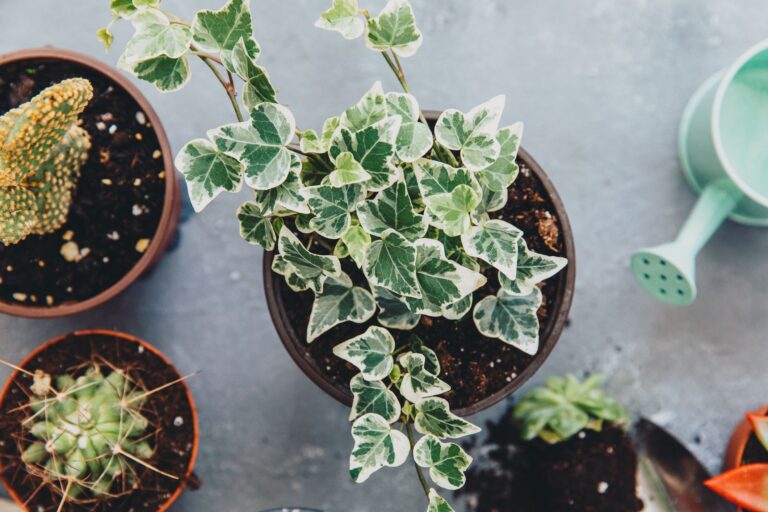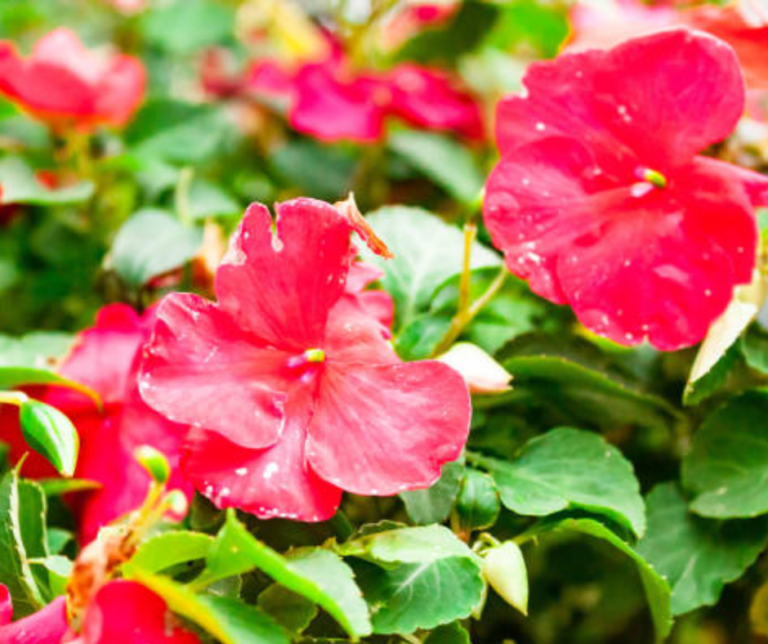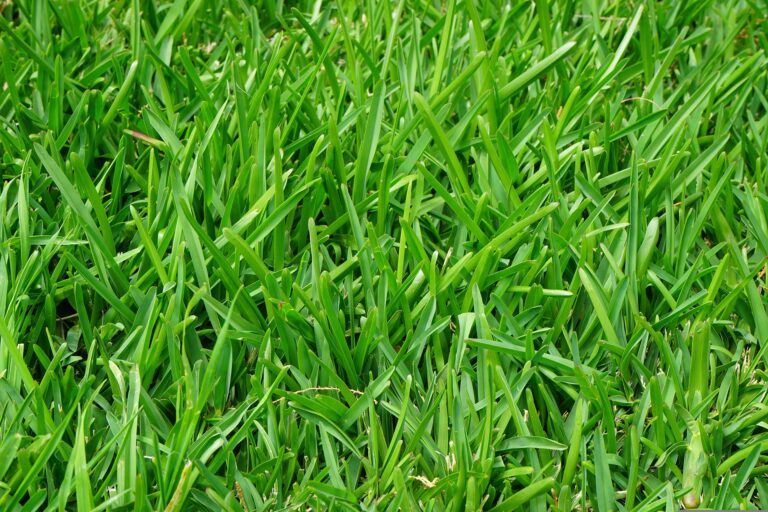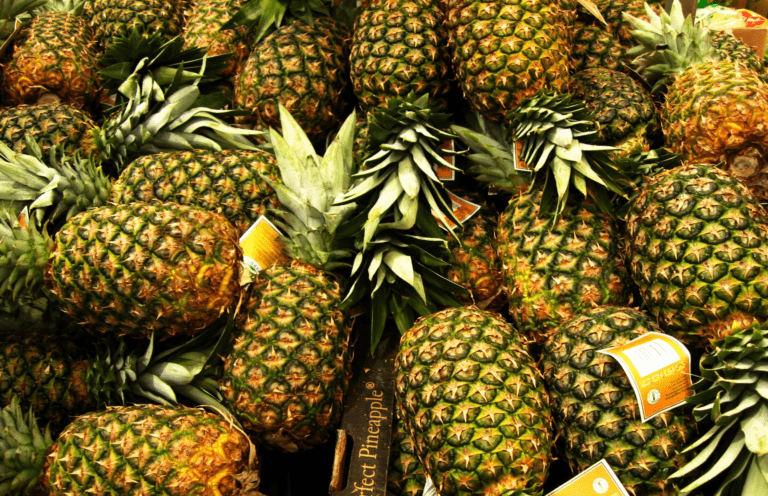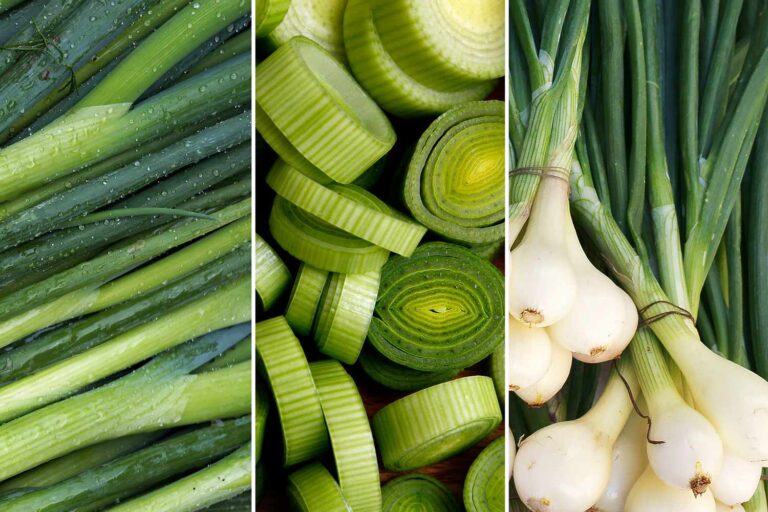DIY Compost Bin: A Simple and Effective Way to Recycle
Table of Contents
The Benefits of Composting: Exploring the Environmental, Economic, and Personal Advantages
Composting is a sustainable practice that offers numerous benefits for both the environment and individuals. By diverting organic waste from landfills, composting reduces methane emissions, a potent greenhouse gas that contributes to climate change. According to the Environmental Protection Agency (EPA), in 2019, landfills accounted for approximately 15% of methane emissions in the United States. Furthermore, composting helps mitigate soil erosion and promotes soil health by adding organic matter, improving soil structure, and enhancing nutrient availability. Healthy soils contribute to healthier plants, better water retention, and increased biodiversity.
Apart from the environmental advantages, composting also provides economic benefits. Through composting, individuals can reduce their household waste, potentially leading to smaller trash bills. Compost can also serve as a valuable substitute for commercial fertilizers and soil amendments, thereby reducing the need to purchase these products. Not only does this save money, but it also decreases dependence on synthetic chemicals that may have negative impacts on the environment and human health. Additionally, communities that implement composting programs can create jobs in waste management, compost facility operations, and compost product sales, contributing to local economies.
On a personal level, composting allows individuals to actively participate in sustainable practices and take responsibility for their environmental impact. It fosters a deeper connection with nature and promotes a sense of stewardship. Additionally, using homemade compost can provide a sense of pride and satisfaction when seeing the positive results it brings to gardens, houseplants, or other green spaces. Composting also provides an opportunity for education and engagement, particularly for children and communities who can learn about the natural cycles of decomposition, the importance of reducing waste, and the value of organic materials. Overall, composting offers a range of environmental, economic, and personal advantages, making it a rewarding and worthwhile practice to incorporate into our daily lives.
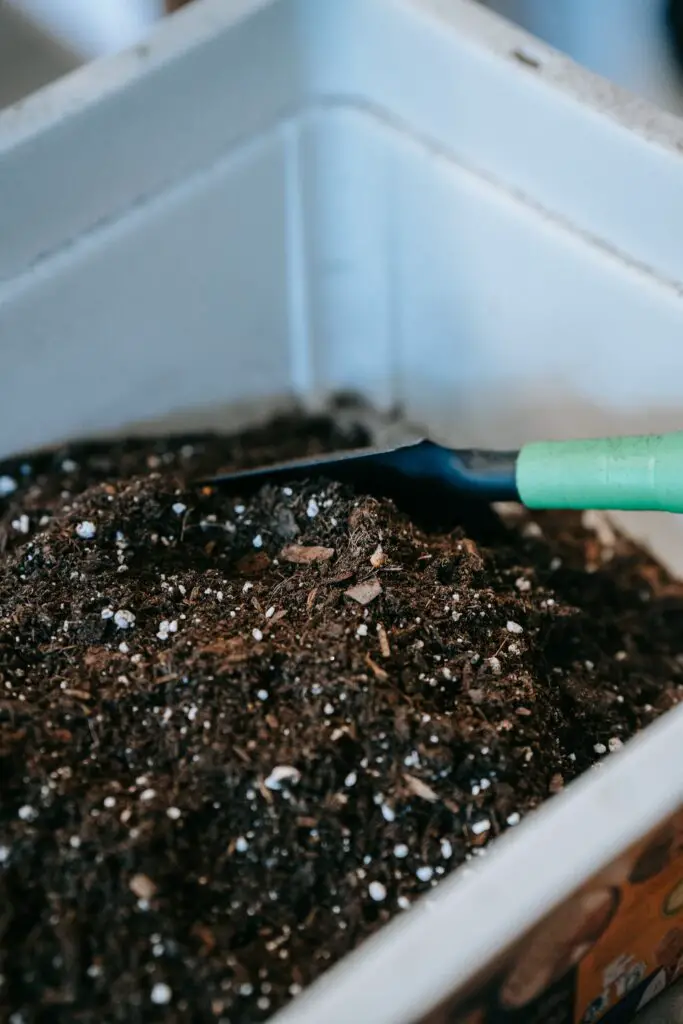
Understanding the Basics: What Composting Is and How It Works
Composting is a natural process that converts organic waste into nutrient-rich soil. It is a sustainable way to manage waste and create a valuable resource for gardening and agriculture. Composting works by harnessing the power of decomposition and the activity of microorganisms to break down organic materials like kitchen scraps, yard waste, and even some paper products.
The process starts with collecting and combining various organic materials in a compost pile or bin. These materials can include fruit and vegetable scraps, coffee grounds, eggshells, grass clippings, leaves, and small branches. As these materials decompose, microorganisms such as bacteria, fungi, and insects begin to break them down, releasing heat, carbon dioxide, and water vapor. This decomposition process generates heat, which is a key factor in speeding up the breakdown of organic matter. The heat also helps to kill off pathogens and weed seeds that may be present in the compost.
Selecting the Right Location for Your DIY Compost Bin: Factors to Consider
Selecting the right location for your DIY compost bin is crucial to ensuring its effectiveness and long-term success. Consider the following factors when choosing a spot for your composting system:
1. Sunlight: A compost bin should ideally be placed in an area that receives at least 6 hours of sunlight per day. Sunlight helps to heat up the compost, promoting decomposition and speeding up the process. Avoid shady areas as they can slow down the composting process.
2. Drainage: It is essential to choose a location with good drainage to prevent waterlogging. Excessive moisture can lead to a smelly and anaerobic compost pile, impeding the breakdown of organic matter. Ensure that the chosen spot allows for proper drainage or consider placing the bin on a base of gravel or pallets.
3. Proximity to the garden: If you plan on using the compost in your garden, consider locating the bin close to where you will be using the finished compost. This will not only save you time and effort when transporting the compost but also encourages a convenient and efficient composting routine.
4. Accessibility: Ensure that the chosen location allows for easy access to the compost bin. You will need to regularly add new materials, turn the compost, and harvest the finished product. Having the bin within reach will make these tasks more manageable.
5. Aesthetics: While functionality is crucial, it’s also essential to consider the visual impact. If you are concerned about the appearance of the compost bin, choose a location that minimizes its visibility. This could be behind a garden shed, alongside a fence, or in an inconspicuous corner of your yard.
By carefully considering these factors, you can select the right location for your compost bin, setting the stage for successful composting and reaping the benefits of nutrient-rich organic matter for your garden.
Building Materials: Exploring Different Options for Your DIY Compost Bin
When it comes to building your DIY compost bin, selecting the right materials is crucial for creating a functional and durable system. The choice of materials will depend on various factors, including your budget, the size of your composting area, and your personal preferences. Let’s explore some different options for building materials that you can consider for your DIY compost bin.
One popular choice for DIY compost bins is wood. Wood is readily available, easy to work with, and provides good insulation for the composting process. Cedar and redwood are excellent options because they are naturally resistant to rot and decay. However, if budget is a concern, treated lumber can also be used, although it may not be as long-lasting.
Another option to consider is plastic. Plastic compost bins are lightweight, affordable, and resistant to weathering. They are easy to clean and transport, making them ideal for those with limited space or for those who may need to relocate their compost bin. Additionally, plastic compost bins often come with features like hinged lids, ventilation holes, and access doors, which can make managing your composting process more convenient.
If durability is a top priority, metal compost bins may be the way to go. Metal bins, such as those made from galvanized steel or aluminum, can withstand the elements and provide a long-lasting composting solution. However, it’s important to note that metal bins may conduct heat more efficiently, which could impact the temperature of your compost pile.
When choosing the materials for your DIY compost bin, it’s essential to strike a balance between functionality, durability, and your specific needs. Take the time to consider the pros and cons of each option before making your decision. Remember, a well-built compost bin will provide the foundation for successful composting and help you reap the rewards of nutrient-rich soil for your gardening endeavors. So, choose wisely, and get ready to dive into the world of composting!
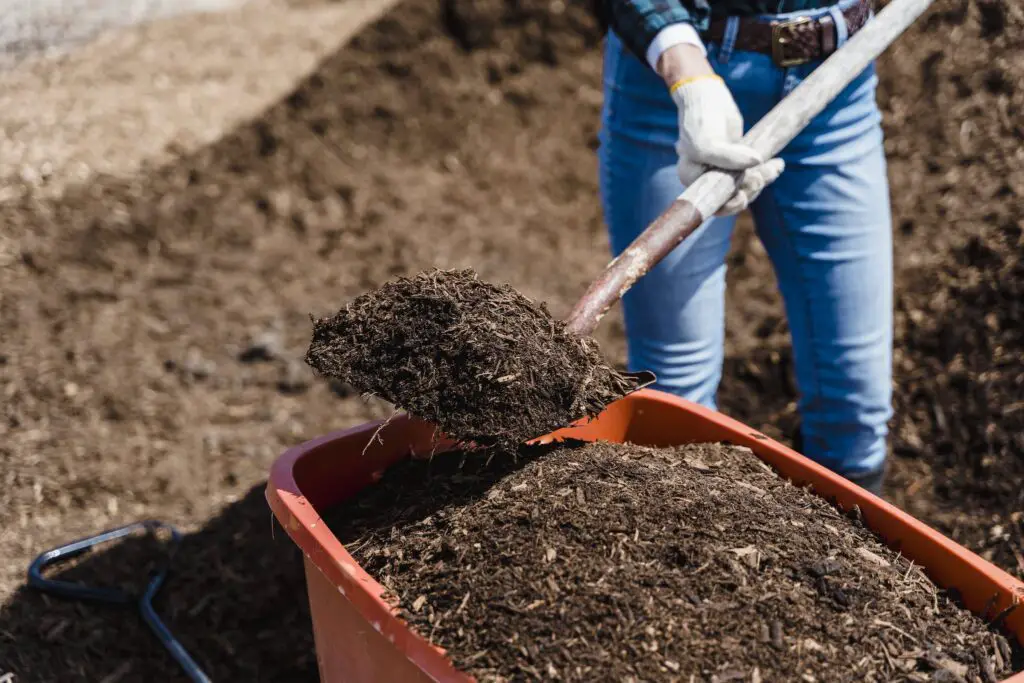
Step-by-Step Guide: Constructing Your DIY Compost Bin
Constructing your own DIY compost bin is a simple and rewarding project that can help you reduce waste, enrich your soil, and contribute to a healthier environment. By following a few basic steps, you can create a functional and efficient composting system right in your backyard.
The first step in building your DIY compost bin is selecting the right materials. While there are many options available, a popular choice is using wooden pallets. These pallets can be easily sourced from local businesses or recycling centers. Make sure to choose pallets that are in good condition and free from any chemicals or treated with harmful substances. Another option is using sturdy wire mesh or chicken wire to create a container. Whatever option you choose, ensure that it allows for proper airflow and drainage. Once you have gathered the necessary materials, you can move on to the next step of constructing your compost bin.
Choosing the Right Compost Ingredients: What to Include and What to Avoid
When it comes to composting, choosing the right ingredients is crucial for achieving a healthy and nutrient-rich compost pile. The key is to strike a balance between carbon-rich materials, also known as browns, and nitrogen-rich materials, also known as greens. Browns provide structure and help with decomposition, while greens provide essential nutrients for the composting process.
Some common ingredients to include in your compost pile as browns are dry leaves, straw, sawdust, and shredded cardboard. These materials are rich in carbon and will help create an ideal environment for decomposition. Greens, on the other hand, include things like grass clippings, fruit and vegetable scraps, coffee grounds, and tea bags. These materials are high in nitrogen and will provide the necessary nutrients for microorganisms to break down the organic matter.
It’s important to avoid certain materials that can disrupt the composting process or introduce harmful chemicals into your pile. Avoid adding meat, dairy products, bones, and oily foods, as they may attract pests or create unpleasant odors. Additionally, avoid adding weeds that have gone to seed or any plants treated with pesticides, as this can negatively impact the health of your compost. By carefully selecting the right ingredients and avoiding harmful additions, you can ensure a successful composting process that yields nutrient-rich compost for your garden.
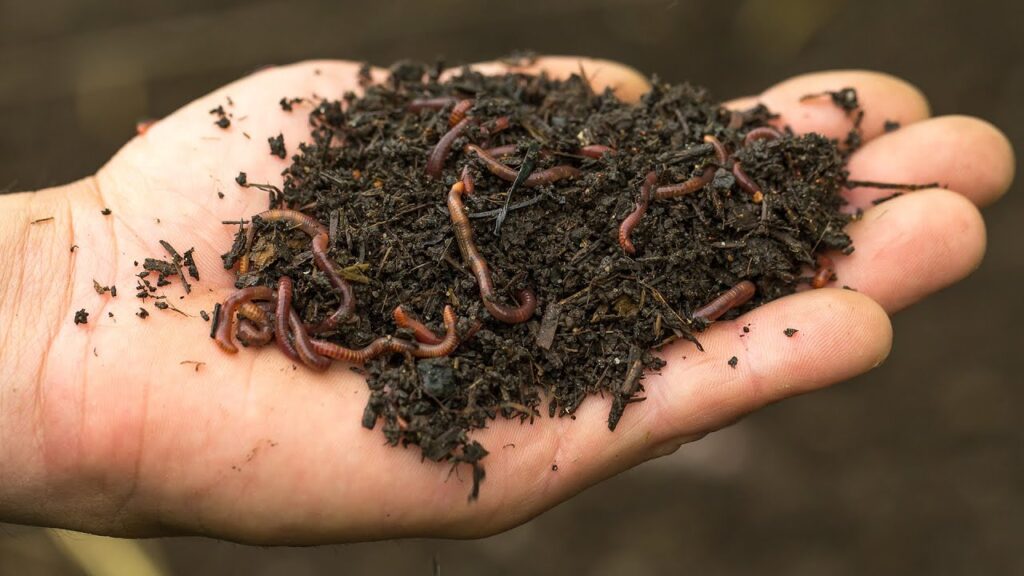
Maintaining Your Compost Bin: Monitoring Temperature, Moisture, and Aeration
Maintaining your compost bin is essential for successfully converting organic waste into nutrient-rich compost. One key aspect of maintenance is monitoring the temperature within the bin. Composting is a biological process that relies on microorganisms breaking down organic matter. These microorganisms work most effectively within a specific temperature range, typically between 135°F and 160°F (57°C to 71°C). To ensure optimal conditions, periodically measure the temperature using a compost thermometer. This will help you gauge whether the compost is active and heating up, or if it is cooling down and requires adjustments to maintain the ideal temperature. By monitoring and adjusting the temperature, you can ensure efficient decomposition and microbial activity, resulting in a faster composting process.
In addition to temperature, monitoring moisture levels is crucial for maintaining your compost bin. The ideal moisture range for composting is around 40% to 60%. If the compost becomes too dry, decomposition slows down, and the microorganisms may become dormant. On the other hand, excessive moisture can lead to unpleasant odors and the growth of anaerobic bacteria. To check moisture levels, grab a handful of compost and squeeze it gently. It should feel like a damp sponge, with moisture being released but no excess water dripping out. If your compost is too dry, add some water, and if it’s too wet, mix in dry materials like leaves or shredded paper. Monitoring and adjusting moisture levels will help maintain a healthy composting environment and prevent potential issues.
Troubleshooting Common Issues: Tips for Overcoming Challenges in Composting
Troubleshooting Common Issues: Tips for Overcoming Challenges in Composting
Composting is an excellent way to reduce waste and create nutrient-rich soil for your garden. However, like any other endeavor, it can sometimes encounter challenges. Understanding and overcoming these common issues is crucial to maintaining a successful composting system.
One of the most common issues people encounter is a foul odor emanating from their compost bin. This odor is usually caused by an imbalance in the composting process. To tackle this problem, ensure that there is a good balance between carbon-rich materials, such as dried leaves or straw, and nitrogen-rich materials, like kitchen scraps or fresh grass clippings. Proper aeration, achieved through regular turning or using a compost tumbler, can also help mitigate the odor by introducing oxygen into the mix. If the odor persists, consider adding wood chips or sawdust to help absorb excess moisture and neutralize the smell.
Another challenge many composters face is the presence of pests in their compost bins. While some critters can be beneficial, like earthworms that aid in decomposition, others, such as fruit flies or rodents, can cause problems. To deter unwanted pests, make sure your compost bin is securely covered with a lid or a thick layer of straw. Avoid putting meat, dairy, or oily food scraps in your compost, as these can attract pests. Additionally, keeping your compost moist but not overly wet can discourage pests from taking up residence. If pests persist, you can try introducing beneficial nematodes or diatomaceous earth to control their populations.
By addressing these common issues and implementing appropriate solutions, you can overcome challenges in your composting journey and enjoy the benefits of nutrient-rich compost for your garden. Stay tuned for more tips on troubleshooting and improving your composting system.
| Challenge | Tips for Overcoming |
|---|---|
| Unpleasant Odors | 1. Balance the compost pile with a mix of green (nitrogen-rich) and brown (carbon-rich) materials. |
| 2. Turn the compost regularly to aerate it and promote decomposition, which reduces odor-causing anaerobic conditions. | |
| 3. Avoid adding meat, dairy, and oily foods, as they can contribute to foul smells and attract pests. | |
| 4. Cover the compost pile with a breathable material like burlap to help contain odors and regulate moisture levels. | |
| Pest Infestation | 1. Avoid adding meat, dairy, and oily foods that can attract pests such as rodents and flies. |
| 2. Bury food scraps under a layer of compost to deter pests and reduce their access to decomposing material. | |
| 3. Use a secure compost bin or container with lids and tight-fitting covers to prevent pests from accessing the compost pile. | |
| 4. Incorporate natural pest deterrents like diatomaceous earth or companion planting certain herbs that repel pests. | |
| Slow Decomposition | 1. Ensure proper balance of green and brown materials in the compost pile to provide essential nutrients and optimize microbial activity. |
| 2. Chop or shred large materials into smaller pieces to accelerate decomposition and increase surface area for microbial activity. | |
| 3. Maintain proper moisture levels (moist but not soggy) by watering the compost pile as needed, especially during dry periods. | |
| 4. Turn the compost regularly to aerate it and mix the materials, which helps distribute microbes and speed up decomposition processes. | |
| Excessive Moisture or Dryness | 1. Monitor moisture levels regularly using a compost moisture meter or by manually checking the compost pile’s feel (should be like a wrung-out sponge). |
| 2. Adjust moisture levels by adding dry materials (e.g., shredded paper, straw) to absorb excess moisture or by watering the pile to increase moisture content. | |
| 3. Cover the compost pile during heavy rain to prevent oversaturation, or use a tarp to shield it from excessive sun and wind, which can dry it out. | |
| 4. Consider using a compost bin or container with drainage holes to allow excess moisture to drain away naturally. | |
| Lack of Space or Suitable Environment | 1. Utilize composting methods suitable for small spaces, such as vermicomposting (composting with worms) or composting in enclosed bins. |
| 2. Choose a composting system that fits the available space and environmental conditions, whether indoors or outdoors. | |
| 3. Explore community composting options or neighborhood composting initiatives if space constraints limit individual composting efforts. | |
| 4. Optimize space by using compost tumblers, stackable bins, or vertical composting systems designed for efficient use of limited space. |
Harvesting and Using Your Compost: Making the Most of Your Recycled Materials
Harvesting and using your compost is the ultimate reward for your efforts in creating a sustainable and nutrient-rich soil amendment. When your compost has reached the desired consistency, indicating that it has fully decomposed, it is ready to be harvested and put to good use in your garden.
To harvest your compost, start by removing any large, undecomposed materials, such as twigs or branches, that may be present. These can be added back into the compost bin to continue breaking down. Then, using a garden fork or shovel, carefully scoop out the finished compost from the bottom of the pile or your compost bin. Be sure to only take what you need, leaving behind a portion of the compost as a starter for your next batch.
Now that you have your freshly harvested compost, it’s time to incorporate it into your gardening practices. One of the most common uses for compost is to apply it as a top dressing around your plants. Simply spread a thin layer of the compost around the base of your plants, taking care not to bury the stems. This will provide a slow release of nutrients to the soil, improving overall plant health and vitality. Additionally, you can mix compost into your potting soil or use it as a component in homemade compost teas for a nutrient boost. The possibilities are endless when it comes to using your homemade compost to nurture your garden and promote sustainable living.
Expanding Your Composting Efforts: Exploring Advanced Techniques and Systems
As a gardening enthusiast, you may be looking to take your composting efforts to the next level by exploring advanced techniques and systems. By doing so, you can enhance the effectiveness and efficiency of your composting process, leading to even greater benefits for your garden and the environment.
One advanced technique worth considering is vermicomposting, which involves the use of worms to break down organic waste into nutrient-rich compost. Vermicomposting not only speeds up the decomposition process but also produces a high-quality compost that is rich in beneficial microorganisms. These microorganisms enhance soil fertility and plant health, leading to healthier and more productive gardens.
Another advanced system is the use of compost tea. Compost tea is a liquid fertilizer made from steeping compost in water. This process extracts the nutrients and beneficial microorganisms from the compost, resulting in a nutrient-rich solution that can be applied to plants as a foliar spray or soil drench. Compost tea can help improve soil structure, promote vigorous plant growth, and increase resistance to pests and diseases.
By exploring these advanced techniques and systems, you can take your composting efforts to new heights. Not only will you be able to produce high-quality compost more efficiently, but you will also see the positive impact on your garden’s health and productivity. So why not delve into the world of vermicomposting and compost tea and discover the benefits they can bring to your composting journey?
Composting in Small Spaces: Tips for Apartment Dwellers and Urban Gardens
Urban gardening is gaining popularity among apartment dwellers who want to bring the joys of gardening to their small spaces. While limited space may seem like a challenge, it is entirely possible to compost in urban environments with a few smart strategies. One of the main concerns for apartment dwellers is the potential for odor from composting, but with proper management, this can be easily mitigated. By using an airtight bin with a charcoal filter, you can effectively contain odors and maintain a fresh-smelling living space. Additionally, regularly turning and aerating your compost will help prevent any unpleasant smells from developing.
Another consideration for composting in urban areas is the lack of outdoor space. However, this should not deter you from composting. You can opt for vermicomposting, which utilizes worms to break down organic waste. Worm bins are small and can easily fit into tight spaces. Not only do worms consume a wide range of organic matter, but they also produce nutrient-rich castings that are excellent for fertilizing plants. With a little effort and creativity, composting in small spaces can be a rewarding and sustainable practice for apartment dwellers and urban gardeners alike.
| Challenge | Tips for Composting in Small Spaces |
|---|---|
| Limited Space | 1. Choose the Right Container: Select a compact composting bin or container that fits well within your available space, such as a small-scale compost tumbler or a stackable bin system. |
| 2. Vertical Composting: Utilize vertical space by using tiered bins or stackable composting systems that allow you to compost in layers, maximizing composting capacity without expanding horizontally. | |
| 3. Indoor Composting Options: Consider indoor composting methods like vermicomposting (composting with worms) using a small worm bin placed under the sink or in a closet. | |
| 4. Balcony or Patio Composting: Utilize balcony or patio space for composting by using compact containers or specialized composting systems designed for small outdoor areas. | |
| Odor Management | 1. Aerate and Mix: Regularly turn the compost to aerate it and mix the materials, which helps prevent anaerobic conditions that lead to unpleasant odors. |
| 2. Balance Green and Brown Materials: Maintain a proper balance of green (nitrogen-rich) and brown (carbon-rich) materials to promote efficient decomposition and reduce odor potential. | |
| 3. Avoid Adding Smelly Materials: Refrain from adding strong-smelling food scraps like meat and dairy, and opt for odor-neutral or less pungent compost ingredients instead. | |
| Moisture Control | 1. Monitor Moisture Levels: Regularly check the moisture content of the compost pile using a compost moisture meter or by manually assessing the dampness of the materials. |
| 2. Add Dry Materials: Incorporate dry materials like shredded paper, cardboard, or dried leaves to absorb excess moisture and help maintain the ideal moisture balance in the compost. | |
| 3. Cover the Compost: Cover the compost pile with a breathable material like burlap or a compost cover to help regulate moisture levels and prevent excessive drying or saturation. | |
| Composting Method Selection | 1. Vermicomposting: Consider vermicomposting as a space-efficient composting method, as it can be done indoors with a small worm bin and requires minimal space and maintenance. |
| 2. Bokashi Composting: Explore bokashi composting, a fermentation process that breaks down food waste anaerobically, making it suitable for small spaces like apartments and kitchens. | |
| 3. Tumbling Composters: Use compact compost tumblers that can be easily rotated and managed in small outdoor areas like balconies or patios, providing efficient composting in limited space. |
Composting with Limited Time: Strategies for Busy Individuals
Composting is a fantastic way to reduce waste and create nutrient-rich soil for your garden. However, the busy demands of everyday life can make it challenging to find the time to maintain a compost pile. But fear not, because there are strategies you can implement to make composting work for even the busiest individuals.
One time-saving strategy is to invest in a compost tumbler. These handy devices make it easy to turn and aerate your compost, which accelerates the decomposition process. With a tumbler, you can simply add your kitchen scraps and yard waste, give it a good spin every few days, and let nature do the rest. This method requires minimal effort and can yield quality compost in a relatively short period.
Another option for busy individuals is to embrace vermicomposting. This technique involves using worms to break down organic waste. Worms are efficient decomposers and can transform your food scraps into nutrient-rich vermicompost. You can either purchase a vermicomposting bin or create your own using a few simple materials. Just remember to keep the bin in a cool, shady spot and add a bedding material such as shredded newspaper or straw to create a comfortable environment for the worms. With regular feeding and occasional maintenance, you can have a thriving worm composter that requires minimal time and effort.
Composting with Kids: Engaging Children in Sustainable Practices
Engaging children in sustainable practices is not only a great way to teach them about the environment, but it also instills a sense of responsibility and stewardship at a young age. Composting is a perfect activity to involve kids, as it allows them to witness firsthand how waste can be turned into valuable resources for the garden.
One of the benefits of composting with kids is that it provides an opportunity for them to learn about the natural cycle of life. They can see how organic matter, such as food scraps and garden waste, decomposes and transforms into nutrient-rich soil amendment. Through this process, they begin to understand the importance of recycling and reducing waste.
Additionally, composting can be a fun and hands-on activity for children. They can actively contribute to the process by collecting and sorting compostable materials, turning the pile, and monitoring the temperature and moisture levels. This involvement not only fosters their curiosity and sense of ownership but also helps them develop valuable skills in observation, problem-solving, and teamwork.
By engaging children in composting, we empower them to become environmental stewards and agents of change. They will learn how their actions can have a positive impact on the planet and gain a deeper appreciation for the natural world. Moreover, composting with kids creates an opportunity for meaningful family bonding and promotes a sustainable lifestyle that will benefit both current and future generations. So, why not get started on this wonderful journey of composting with your kids today?
Composting for Gardening: Enhancing Soil Quality and Plant Health
Enhancing the health and vitality of your garden begins with the quality of your soil. Composting is a powerful tool that can help you achieve this by enriching your soil with essential nutrients and beneficial microorganisms. By recycling organic waste through the process of composting, you can create a nutrient-rich amendment that will support the growth of your plants and enhance their overall health.
One of the key benefits of composting for gardening is the improvement of soil structure. Compost acts as a natural conditioner, helping to loosen heavy clay soils and improve drainage, while also providing moisture retention in sandy soils. This improvement in soil structure allows the roots of your plants to penetrate deeper into the ground, accessing the nutrients and water they need for optimal growth. Additionally, the organic matter in compost encourages the growth of beneficial microorganisms, such as bacteria and fungi, which further enhance the soil’s fertility and overall health. As a result, your plants will have stronger root systems, increased resistance to pests and diseases, and improved resilience to environmental stresses.
By incorporating compost into your gardening practices, you are not only improving the health and productivity of your garden but also contributing to the sustainable management of organic waste. Composting reduces the amount of waste that ends up in landfills, where it would release harmful greenhouse gases as it decomposes. Instead, by diverting organic waste into your compost pile, you are harnessing its potential and transforming it into a valuable resource for your garden. This environmentally friendly approach not only benefits your own plants but also contributes to the larger goal of waste reduction and promoting sustainable living.
• Composting enriches soil with essential nutrients and beneficial microorganisms.
• It improves soil structure by loosening heavy clay soils and improving drainage.
• Compost helps retain moisture in sandy soils.
• Improved soil structure allows roots to penetrate deeper for optimal growth.
• Organic matter in compost encourages the growth of beneficial microorganisms, enhancing fertility and overall health of the soil.
• Stronger root systems, increased resistance to pests and diseases, and improved resilience to environmental stresses are benefits of composting for gardening.
• Composting contributes to sustainable management of organic waste by reducing landfill waste.
• By diverting organic waste into compost piles, harmful greenhouse gas emissions from decomposition in landfills are minimized.
• Composting promotes waste reduction and sustainable living.
Composting for the Future: Promoting Sustainable Living and Waste Reduction
Promoting sustainable living and waste reduction through composting is a crucial step towards building a greener future. By implementing composting practices, individuals can actively contribute to reducing the amount of organic waste that ends up in landfills, while also nurturing their own gardens and plants.
Composting is a natural process that transforms organic materials, such as food scraps, yard waste, and leaves, into nutrient-rich compost. This compost can then be used to enrich soil, improve plant growth, and reduce the need for chemical fertilizers. By diverting organic waste from landfills, composting helps to reduce greenhouse gas emissions and minimize the release of harmful pollutants into the environment.
In addition to its environmental benefits, composting also offers economic advantages. By producing your own compost, you can save money on purchasing commercial fertilizers and soil amendments. Additionally, composting can help to reduce municipal waste management costs, as the volume of organic waste being sent to landfills is greatly reduced. With the increasing emphasis on sustainability and waste reduction, incorporating composting practices into our daily lives is a simple yet impactful way to contribute to a greener future.
Can I add meat and dairy products to my compost bin?
It is best to avoid adding meat and dairy products to your compost bin as they can attract pests and create unpleasant odors. Stick to fruit and vegetable scraps, coffee grounds, and yard waste.
How long does it take for compost to be ready to use?
The time it takes for compost to be ready can vary depending on several factors such as the materials used, the size of the compost bin, and the conditions in which it is kept. Generally, it can take anywhere from a few months to a year for compost to fully decompose.
Can I use compost directly on my plants?
Yes, compost can be used directly on plants as a natural fertilizer. However, it is best to let the compost mature for a few weeks before applying it to plants to ensure that it has fully decomposed.
What can I do if my compost bin smells bad?
If your compost bin smells bad, it may be too wet or have an imbalance of materials. To fix this, add dry materials like leaves or shredded paper to absorb excess moisture and mix the contents of the bin. Avoid adding any materials that can cause strong odors such as meat or dairy products.
Can I compost in a small apartment or urban garden?
Yes, composting in small spaces is possible. Consider using a small-scale composting method like vermicomposting with worms or using a compost tumbler that requires less space. You can also look for community composting programs in your area.
How often should I turn my compost bin?
It is recommended to turn your compost bin every 1-2 weeks to ensure proper aeration and decomposition of the materials. However, this frequency can vary depending on the size of your bin and the materials being composted.
Can I compost paper towels and napkins?
Yes, paper towels and napkins can be composted as long as they are not soiled with chemicals or non-compostable materials like plastic. Tear them into smaller pieces to help them decompose faster.
Can I compost pet waste?
It is not recommended to compost pet waste, as it can contain harmful bacteria and parasites. It is best to dispose of pet waste separately in a designated area or with your regular trash.
Can I compost weeds and invasive plants?
Yes, you can compost weeds and invasive plants. However, make sure to fully remove any seeds or reproductive parts to prevent them from spreading in your compost and garden.
Can I compost citrus peels?
Yes, citrus peels can be composted. However, they are acidic and can take longer to break down. It is best to chop them into smaller pieces and mix them with other compostable materials for faster decomposition.
Can I compost cooked food scraps?
Yes, cooked food scraps can be composted. However, avoid adding heavily seasoned or oily foods as they can attract pests. Be sure to mix them well with other compost materials to help with decomposition.

Ankit Garg is a seasoned writer at South El Monte Hydroponics, blending his passion for agriculture with a penchant for storytelling. With a degree in Agricultural Sciences from a prestigious institution, Ankit’s expertise lies in hydroponics, sustainable farming, and innovative cultivation techniques. His keen interest in exploring the intersection of technology and agriculture has led him to delve deep into the realm of hydroponic farming, where he thrives in uncovering the latest advancements and sharing insights through his engaging prose. Ankit’s dedication to promoting eco-friendly and efficient farming practices through his writing has earned him recognition within the agricultural community and beyond.

